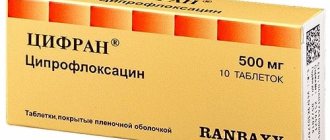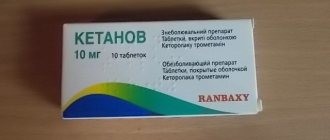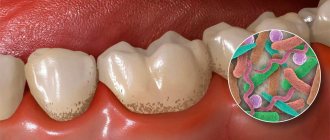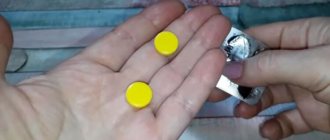Ketanov 10 mg 100 pcs. film-coated tablets
pharmachologic effect
NSAID, derivative of pyrrolysine-carboxylic acid. It has a pronounced analgesic effect, and also has anti-inflammatory and moderate antipyretic effects. The mechanism of action is associated with inhibition of the activity of COX, the main enzyme in the metabolism of arachidonic acid, which is a precursor of prostaglandins, which play a major role in the pathogenesis of inflammation, pain and fever.
Composition and release form Ketanov 10 mg 100 pcs. film-coated tablets
Tablets - 1 tablet: ketorolac tromethamine 10 mg.
10 pieces. — contour cell packaging (10) — cardboard packs.
Description of the dosage form
Film-coated tablets.
Directions for use and doses
For adults, when taken orally - 10 mg every 4-6 hours, if necessary - 20 mg 3-4 times a day.
For intramuscular administration, a single dose is 10-30 mg, the interval between injections is 4-6 hours. The maximum duration of use is 2 days.
Maximum doses: when taken orally or intramuscularly - 90 mg/day; for patients weighing up to 50 kg, with impaired renal function, as well as for persons over 65 years of age - 60 mg/day.
Pharmacodynamics
The analgesic effect occurs after approximately 30 minutes, the maximum analgesic effect develops after 1-2 hours. The duration of the analgesic effect is 4-6 hours or more, depending on the dose. Does not have a sedative or anxiolytic effect, does not affect opioid receptors. It does not have a depressant effect on the respiratory center and does not enhance respiratory depression and sedation caused by opioid analgesics. Does not cause drug dependence. No withdrawal symptoms occur after abrupt cessation of use. Suppresses platelet aggregation and may cause prolongation of bleeding time. Restoration of platelet function occurs 24-48 hours after discontinuation of the drug.
Pharmacokinetics
When taken orally, it is absorbed from the gastrointestinal tract. Cmax in blood plasma is achieved 40-50 minutes after both oral and intramuscular administration. Eating does not affect absorption. Plasma protein binding is more than 99%.
T1/2 ;- 4-6 hours both after oral administration and after intramuscular administration.
More than 90% of the dose is excreted in the urine, unchanged - 60%; the remaining amount is through the intestines.
In patients with impaired renal function and the elderly, the elimination rate decreases, T1/2 increases.
Indications for use Ketanov 10 mg 100 pcs. film-coated tablets
For short-term relief of moderate and severe pain of various origins.
Contraindications
Erosive and ulcerative lesions of the gastrointestinal tract in the acute phase, the presence or suspicion of gastrointestinal bleeding and/or cerebral hemorrhage, a history of blood coagulation disorders, conditions with a high risk of bleeding or incomplete hemostasis, hemorrhagic diathesis, moderate and severe renal dysfunction ( serum creatinine content more than 50 mg/l), the risk of developing renal failure due to hypovolemia and dehydration; “aspirin triad”, bronchial asthma, nasal polyps, history of angioedema, preventive pain relief before and during surgery, childhood and adolescence up to 16 years of age, pregnancy, childbirth, lactation, hypersensitivity to ketorolac, acetylsalicylic acid and other NSAIDs .
Application of Ketanov 10 mg 100 pcs. film-coated tablets during pregnancy and breastfeeding
Contraindicated during pregnancy, during childbirth and during lactation (breastfeeding).
Ketorolac is contraindicated for use as a premedication, maintenance of anesthesia and for pain relief in obstetric practice, since its influence may increase the duration of the first stage of labor. In addition, ketorolac may inhibit uterine contractility and fetal circulation.
Use with caution in patients with impaired renal function.
Use in children
Contraindicated in children and adolescents under 16 years of age.
special instructions
Use with caution in patients with impaired liver and kidney function, chronic heart failure, arterial hypertension, in patients with erosive and ulcerative lesions of the gastrointestinal tract and a history of bleeding from the gastrointestinal tract.
Ketorolac should be used with caution in the postoperative period in cases where particularly careful hemostasis is required (including after resection of the prostate gland, tonsillectomy, in cosmetic surgery), as well as in elderly patients, because The half-life of ketorolac is prolonged and plasma clearance may be reduced. In this category of patients, it is recommended to use ketorolac in doses close to the lower limit of the therapeutic range. If symptoms of liver damage, skin rash, or eosinophilia appear, ketorolac should be discontinued. Ketorolac is not indicated for use in chronic pain syndrome.
Impact on the ability to drive vehicles and operate machinery
If drowsiness, dizziness, insomnia or depression appear during treatment with ketorolac, special care must be taken when engaging in potentially hazardous activities that require increased attention and speed of psychomotor reactions.
Overdose
Symptoms: (with a single dose) abdominal pain, nausea, vomiting, peptic ulcers, impaired renal function (these symptoms disappeared after discontinuation of the drug). Treatment: symptomatic therapy. Dialysis does not significantly remove ketorolac from the blood.
Side effects of Ketanov 10 mg 100 pcs. film-coated tablets
From the cardiovascular system: rarely - bradycardia, changes in blood pressure, palpitations, fainting.
From the digestive system: nausea, abdominal pain, diarrhea are possible; rarely - constipation, flatulence, feeling of gastrointestinal fullness, vomiting, dry mouth, thirst, stomatitis, gastritis, erosive and ulcerative lesions of the gastrointestinal tract, liver dysfunction.
From the central nervous system and peripheral nervous system: anxiety, headache, drowsiness are possible; rarely - paresthesia, depression, euphoria, sleep disturbances, dizziness, changes in taste, visual disturbances, motor disorders.
From the respiratory system: rarely - respiratory failure, attacks of suffocation.
From the urinary system: rarely - increased frequency of urination, oliguria, polyuria, proteinuria, hematuria, azotemia, acute renal failure.
From the blood coagulation system: rarely - nosebleeds, anemia, eosinophilia, thrombocytopenia, bleeding from postoperative wounds.
From the metabolic side: ;possible increased sweating, swelling; rarely - oliguria, increased levels of creatinine and/or urea in the blood plasma, hypokalemia, hyponatremia.
Allergic reactions: possible skin itching, hemorrhagic rash; in isolated cases - exfoliative dermatitis, urticaria, Lyell's syndrome, Stevens-Johnson syndrome, anaphylactic shock, bronchospasm, Quincke's edema, myalgia.
Other: ;possible fever.
Local reactions: pain at the injection site.
Drug interactions
When ketorolac is used concomitantly with other NSAIDs, additive side effects may develop; with pentoxifylline, anticoagulants (including heparin in low doses) - the risk of bleeding may increase; with ACE inhibitors - there may be an increased risk of developing renal dysfunction; with probenecid - the plasma concentration of ketorolac and its half-life increase; with lithium preparations - a decrease in the renal clearance of lithium and an increase in its concentration in plasma is possible; with furosemide - reducing its diuretic effect.
When using ketorolac, the need for the use of opioid analgesics for pain relief is reduced.
Advantages
Ketanov has a powerful anesthetic effect for toothache, which lasts for a long period of time. Among NSAIDs, you cannot find another drug with a similar effect. A person can achieve a more pronounced therapeutic effect only by taking steroid painkillers. For this reason, Ketanov is prescribed even for unbearable toothaches associated with postoperative complications and traumatic factors.
Blocking prostaglandins also makes it possible to stop signs of inflammation and fever.
The therapeutic effect of Ketanov is equal to the drug Nise
Ketanov can be included in the list of the best painkillers because it:
- does not affect the cells of the central nervous system;
- does not provoke digestive disorders in the form of vomiting and stool disorders;
- does not increase heart rate;
- is not addictive;
- relieves severe pain, in which other NSAIDs are powerless;
- has a long-lasting analgesic effect (up to 8 hours);
- dispensed without a doctor's prescription;
- affects pain of various localizations.
Reception scheme
For toothache Ketanov take 1 tablet per day. It does not matter when the drug is taken (before or after meals). Also, the period of time that has passed since the next meal does not matter. If the pain worsens again, then you need to take another tablet after 5-6 hours. If the doctor has allowed children under 12 years of age to take tablets, then a single dosage of the drug for this category of patients will not exceed ½ tablet.
The solution is administered intramuscularly only to those patients who have reached 16 years of age. It is allowed to use no more than 2 ml of solution at a time. For people with kidney pathologies and older people, the maximum dosage of Ketanov does not exceed 1 ml. The interval between injections is also 5-6 hours.
The frequency of taking the medication depends on the severity of pain symptoms:
- for moderate pain, take 1 tablet every 12 hours;
- for acute unbearable spasms, consumption of 4 capsules per day is allowed.
Despite the fact that Ketanov has a powerful effect, after its consumption it is not recommended to exert mechanical force on the tooth. Otherwise, the pain syndrome may worsen again. Also, you should not take the drug immediately before going to the dentist. It can distort the clinical picture of the disease (for example, when determining the stage of caries) and contribute to the incorrect diagnosis.
The drug should be discontinued on day 5. Failure to comply with this rule increases the likelihood of developing side effects from the gastrointestinal tract. It is necessary to consult a doctor for toothaches even if Ketanov has completely relieved the pain symptoms. There is a high probability that the symptom will make itself felt in the near future with greater intensity.
The drug in the form of a solution is rarely used to eliminate symptoms of dental problems. It is used to relieve muscle spasms. You can learn more about the methods of administering the solution in the instructions for use.
Contraindications
Despite its effectiveness and long-lasting effect, the use of Ketanov is prohibited for people intolerant of its auxiliary and active substances and with certain types of diseases:
- chronic renal and liver failure;
- decompensated heart failure;
- exacerbation of gastrointestinal pathologies (ulcers, gastritis);
- disorders of the circulatory system;
- polyps and malignant formations in the nasopharynx.
Drink Ketanov with caution:
- with a low number of platelets in the blood;
- diabetes mellitus;
- rheumatoid disorders;
- sepsis;
- hypertension.
The drug is not recommended for pregnant and lactating women. Its active substance can be absorbed into breast milk and have a negative effect on children.
The tablets have age restrictions. They are not recommended for use by persons under 12 and over 65 years of age.







